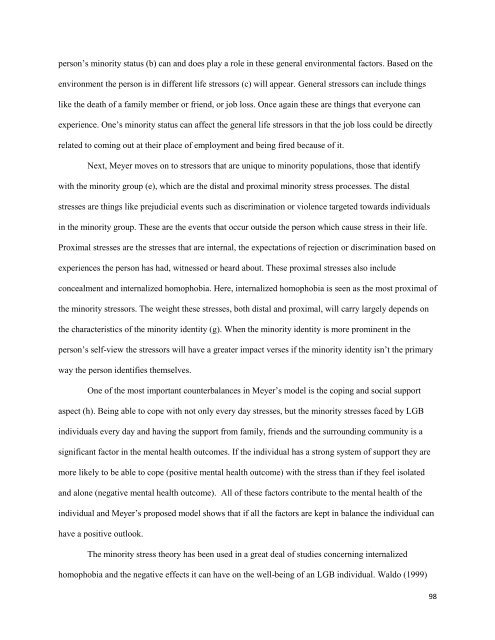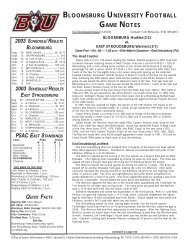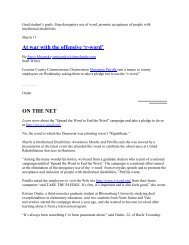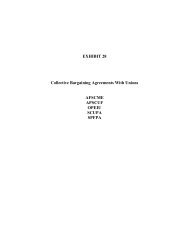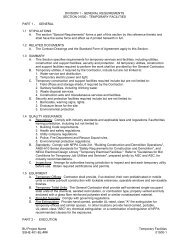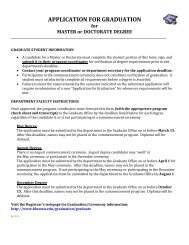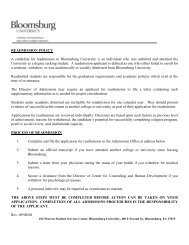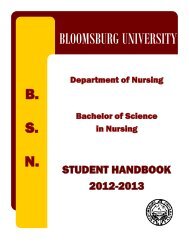Human Rights at Home and Abroad: Past, Present, and Future
Human Rights at Home and Abroad: Past, Present, and Future
Human Rights at Home and Abroad: Past, Present, and Future
You also want an ePaper? Increase the reach of your titles
YUMPU automatically turns print PDFs into web optimized ePapers that Google loves.
person‘s minority st<strong>at</strong>us (b) can <strong>and</strong> does play a role in these general environmental factors. Based on the<br />
environment the person is in different life stressors (c) will appear. General stressors can include things<br />
like the de<strong>at</strong>h of a family member or friend, or job loss. Once again these are things th<strong>at</strong> everyone can<br />
experience. One‘s minority st<strong>at</strong>us can affect the general life stressors in th<strong>at</strong> the job loss could be directly<br />
rel<strong>at</strong>ed to coming out <strong>at</strong> their place of employment <strong>and</strong> being fired because of it.<br />
Next, Meyer moves on to stressors th<strong>at</strong> are unique to minority popul<strong>at</strong>ions, those th<strong>at</strong> identify<br />
with the minority group (e), which are the distal <strong>and</strong> proximal minority stress processes. The distal<br />
stresses are things like prejudicial events such as discrimin<strong>at</strong>ion or violence targeted towards individuals<br />
in the minority group. These are the events th<strong>at</strong> occur outside the person which cause stress in their life.<br />
Proximal stresses are the stresses th<strong>at</strong> are internal, the expect<strong>at</strong>ions of rejection or discrimin<strong>at</strong>ion based on<br />
experiences the person has had, witnessed or heard about. These proximal stresses also include<br />
concealment <strong>and</strong> internalized homophobia. Here, internalized homophobia is seen as the most proximal of<br />
the minority stressors. The weight these stresses, both distal <strong>and</strong> proximal, will carry largely depends on<br />
the characteristics of the minority identity (g). When the minority identity is more prominent in the<br />
person‘s self-view the stressors will have a gre<strong>at</strong>er impact verses if the minority identity isn‘t the primary<br />
way the person identifies themselves.<br />
One of the most important counterbalances in Meyer‘s model is the coping <strong>and</strong> social support<br />
aspect (h). Being able to cope with not only every day stresses, but the minority stresses faced by LGB<br />
individuals every day <strong>and</strong> having the support from family, friends <strong>and</strong> the surrounding community is a<br />
significant factor in the mental health outcomes. If the individual has a strong system of support they are<br />
more likely to be able to cope (positive mental health outcome) with the stress than if they feel isol<strong>at</strong>ed<br />
<strong>and</strong> alone (neg<strong>at</strong>ive mental health outcome). All of these factors contribute to the mental health of the<br />
individual <strong>and</strong> Meyer‘s proposed model shows th<strong>at</strong> if all the factors are kept in balance the individual can<br />
have a positive outlook.<br />
The minority stress theory has been used in a gre<strong>at</strong> deal of studies concerning internalized<br />
homophobia <strong>and</strong> the neg<strong>at</strong>ive effects it can have on the well-being of an LGB individual. Waldo (1999)<br />
98


